Justin Taylor's Blog, page 125
January 2, 2014
Bonhoeffer: Beware of Community, Beware of Being Alone
 From a man who died alone and yet not alone:
From a man who died alone and yet not alone:
Let him who cannot be alone beware of community.
He will only do harm to himself and to the community. Alone you stood before God when he called you; alone you had to answer that call; alone you had to struggle and pray; and alone you will die and given an account to God. You cannot escape from yourself; for God has singled you out. If you refused to be alone you are rejecting God’s call to you, and you can have no part in the community of those who are called. “The challenge of death comes to us all, and no one can die for another. Everyone must fight his own battle with death by himself, alone. . . . I will not be with you then, nor you with me” (Luther).
But the reverse is also true: Let him who is not in community beware of being alone.
Into the community you were called, the call was not meant for you alone; in the community of the called you bear your cross, you struggle, you pray. You are not alone, even in death, and on the Last Day you will be only one member of the great congregation of Jesus Christ. If you scorn the fellowship of the brethren, you reject the call of Jesus Christ, and thus your solitude can only be hurtful to you. “If I die, then I am not alone in death; if I suffer, they [the fellowship] suffer with me” (Luther).
—Dietrich Bonhoeffer, Life Together (New York: Harper & Row, 1954), 77 [italics and ellipses original].
The Influence of Edwards on Piper
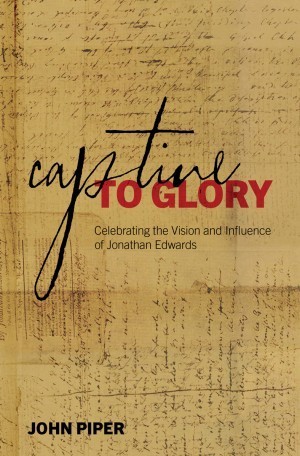 Today Desiring God is releasing a new—and free—eBook, containing excerpts from John Piper’s writings on Jonathan Edwards, entitled Captive to Glory: Celebrating the Vision and Influence of Jonathan Edwards.
Today Desiring God is releasing a new—and free—eBook, containing excerpts from John Piper’s writings on Jonathan Edwards, entitled Captive to Glory: Celebrating the Vision and Influence of Jonathan Edwards.
In addition to Piper’s own published writings on the theology and implications of Edwards for life and ministry, DG also graciously included something I wrote, offering a chronological tracing of Piper’s own encounter with Edwards: what he read, when he read it, and how it influenced him.
January 1, 2014
Videos and Summaries from the Main Sessions of the Historic Cross Student Missions Conference
Only time will tell, but it seems that the first annual Cross student missions conference was a historic event, perhaps a key moment in mobilizing God’s people to help the nations be glad in him.
Here are all of the main sessions—summarized with video. (I assume audio will be forthcoming here.)
Trip Lee Kick-Off
Summary: Before speaking of how and why to share the gospel with the nations, CROSS wanted to make clear what that gospel was. Trip Lee began CROSS 2013 by doing just that by teaching throughout his rapping on the truths of the gospel.
John Piper: “The Chief End of Missions: The Supremacy of God in the Joy of All Peoples”
Summary: “The chief end of missions is the supremacy of God in the joy of all peoples.” These two ends are of an identical essence, totally and completely inseparable, for the only gladness that lasts is a gladness in the glory of God. This reality frees us from choosing either the glory of God or compassion for the lost as the primary desire for missions.
Manuscript here.
Panel: Mark Dever & John Piper
Summary: Mark Dever interviews John Piper about why he’s not a missionary, the relationship between marriage and missions, and what tricky terms like “missionary,” “unreached,” and “calling” actually mean. This discussion helps clarify the distinction in role between the individual Christian and the local church, while also giving Piper the opportunity to squelch the notion that Calvinism kills missions and evangelism.
Thabiti Anyabwile: “Beauty from Ashes: The Plight of Man and the Purposes of God”
Summary: In Romans 1:13-18, the apostle Paul describes a life unashamed of the gospel, eager to proclaim Christ in places where He has yet to be named. Paul is eager because the gospel is the best news in the universe, containing divine power and providing in Christ the singular salvation from God’s holy, righteous, and personal wrath. The only thing that turns away the wrath of God is Jesus.
Kevin DeYoung: “Five Surprising Motivations for Missions”
Summary: Far from being obstacles for mission, Kevin DeYoung shares why the five points of Calvinism are surprising motivators for missions. In fact, belief in an electing, sovereign, all-powerful God is the only thing that keeps one humble in the midst of results and hopeful when there are none. Many may ask why anyone would go if God has only called some. But the Bible asks, “Why would anyone go unless God has certainly called some?”
Conrad Mbewe: “The Death of Death in the Death of Christ: The Good News of a Bloody Cross”
Summary: To speak of God’s wrath evokes all different sorts of emotions and reaction in people. Yet the horrific death of Christ and his glorious resurrection is the greatest news that mankind could ever hear given that with each day, humans store up God’s righteous judgment and wrath. Believing this news necessitates announcing it.
Richard Chin: “Seeing Jesus Properly: The Lord to Gladly Obey Forever”
Summary: Richard Chin preaches from Mark 8 in order to show that a proper view of Jesus demands a proper response to Jesus. Because He is the Son of Man whose kingdom will never end, His followers confidently and joyfully take up their cross and obediently take the gospel to those who do not know Him.
Mack Stiles: “The Call of Christ: Inspired, Informed, Confirmed”
Summary: In this session, Mack Stiles upholds biblical criteria one should use when discerning a “call” to missions. Mere inward and emotional certainty is not enough. The missionary’s call should be inspired by the Word of God, informed by the content of the gospel, and externally confirmed by the church.
Panel: Mack & Leann Stiles, Zane & Catherine Pratt, and Mark Dever
Summary: What are some realities of missionary life? Why should or why shouldn’t a person become a missionary? Who determines this? Mark Dever interviews missionaries who have spent decades on the field to answer fundamental questions like these.
Matt Chandler: “The Life Worth Living for Christ Is a Life Worth Losing”
Summary: Matt Chandler unpacks the life of the apostle Paul as proof positive that there’s no such thing as a person beyond God’s saving mercy. In fact, his post-conversion commitment to evangelism and, even more, his Christ-exalting fearlessness in the midst suffering depicts the truth of his words in Philippians 1:21: “For me to live is Christ, and to die is gain.” May the same be said of all God’s people, that a better day is coming where we will receive our reward and see — finally — our treasured King face to face.
David Sitton: Testimony
Summary: David Sitton of To Every Tribe Ministries shares his testimony of how the Lord saved him over 30 years ago and then called him to serve among the unreached peoples in Papua New Guinea. This same Lord saves and calls today, and it is a privilege—not a burden—to join Him in this work.
Michael Oh: “What Do Cross-Cultural Missionaries Cross Cultures For?”
Summary: Michael Oh of the Lausanne Movement calls Christians to care about all types of global suffering, especially eternal suffering. In this, the church functions as both prophet and servant — boldly heralding the truth of God’s Word while simultaneously seeking to serve others’ needs in showing the compassion of Christ. Individual Christians, too, will suffer and should use these moments — as often as the Lord brings them—to endure in faith and to hold out the gospel as the only true and lasting alleviation from suffering.
D. A. Carson: “The Church as the Means and the Goal of Missions”
Summary: D.A. Carson preaches on the social dimensions of both sin and the gospel. Sin doesn’t just send you to Hell, and the gospel doesn’t just save your soul. Each has necessary social, personal, and horizontal ramifications, culminating in the existence of and a commitment to the church, the bride of Christ, for it is in the church where the love of God is made known and reflected to the nations.
David Platt: “Mobilizing God’s Army for the Great Commission”
Summary: To close CROSS 2013, David Platt delivers a clarion call to all Christians, imploring them to consider what their obedience to the Great Commission looks like. For many, it will be as stateside senders; for some, it will be as lifelong goers; for others, it will be as offerings poured out en route to give the gospel to yet-to-be-reached peoples. In every scenario — in going and sending and even in dying—God is achieving His incontrovertible purpose: the supremacy of the glory of God in the Christ-exalting joy of all peoples.
Download the Entire ESV Bible on MP3: Free in January
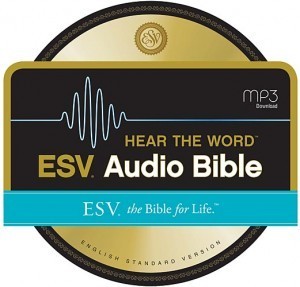 Christian Audio’s free giveaway this month is a great deal: the entire ESV Hear the Word Audio Bible (75 hours; retail: $29.99).
Christian Audio’s free giveaway this month is a great deal: the entire ESV Hear the Word Audio Bible (75 hours; retail: $29.99).
The excuses for reading and hearing God’s Word in 2014 keep shrinking.
December 31, 2013
Why Real Christians Are So Odd
A. W. Tozer:
A real Christian is an odd number, anyway.
He feels supreme love for One whom he has never seen;
talks familiarly everyday to someone he cannot see;
expects to go to heaven on the virtue of another;
empties himself in order to be full;
admits he is wrong so he can be declared right;
goes down in order to get up;
is strongest when he is weakest;
richest when he is poorest;
happiest when he feels the worst.
He dies so he can live;
forsakes in order to have;
gives away so he can keep;
sees the invisible;
hears the inaudible;
and knows that which passeth knowledge.
—A. W. Tozer, The Root of the Righteous (Harrisburg, PA: Christian Publications, 1955), 156.
December 28, 2013
A Summary and Questions to Ask on Divorce and Remarriage
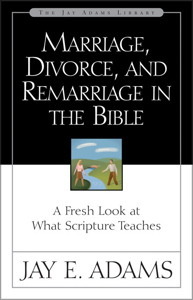 The issue of divorce and remarriage is not only a painful reality, personally and pastorally, but is also a very difficult subject exegetically. I was helped several years ago by reading Jay Adams’ Marriage, Divorce, and Remarriage in the Bible. Even if you end up disagreeing with his conclusions, it’s a model of biblical and logical and pastoral reasoning.
The issue of divorce and remarriage is not only a painful reality, personally and pastorally, but is also a very difficult subject exegetically. I was helped several years ago by reading Jay Adams’ Marriage, Divorce, and Remarriage in the Bible. Even if you end up disagreeing with his conclusions, it’s a model of biblical and logical and pastoral reasoning.
I thought it might be helpful for some readers if I reproduced his summary and checklist:
Principles
A. Marriage
1. is a divinely ordained institution
2. is the first and most fundamental institution
3. is covenantal and binding
4. is a covenant of companionship
5. is the place for true intimacy
6. is to conform to the model of Christ and His church
B. Divorce
1. always stems from sin
2. is not necessarily sinful
3. always breaks a marriage
4. is never necessary among believers
5. is legitimate on the grounds of sexual sin
6. is legitimate when an unbeliever wishes to divorce a believer
7. is forgivable when sinful
C. Remarriage
1. in general, is desirable
2. is possible for a divorced person
3. is possible for a sinfully divorced person through forgiveness
4. is possible only when all biblical obligations have been met
5. is possible only when parties are prepared for marriage
Questions
1. Are all, one, or none of the parties Christians
2. Who wants the divorce?
3. On what grounds?
4. Does this party really want a divorce, or only a change in the situation?
5. Has 1 Corinthians 6 been violated?
6. Has sexual sin been present?
7. Is there acceptable evidence for such sin or only hearsay and/or supposition?
8. Has church discipline been applied? (Matt 18)
9. If so, what was the outcome?
10. Is there repentance/forgiveness?
11. Is reconciliation required?
12. Does an unbeliever want the marriage to continue?
13. Has a former spouse remarried another?
14. Did any church fail to handle a divorce/remarriage properly?
15. If so, how? And what must be done to set this straight?
16. Is the believer in a state where the church may declare him/her free from all obligations and,
therefore, free to remarry?
17. If not, what more needs to be done to bring about this condition?
December 27, 2013
Livestream the Cross Conference
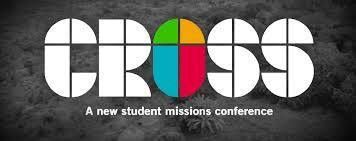
Beginning now, you can livestream the main session for the Cross Conference (a new student missions conference) at desiringGod.org/live.
Here’s the schedule (all times Eastern Standard Time):
Friday, December 27
8:15 pm | John Piper: “The Chief End of Missions: The Supremacy of God in the Joy of All Peoples”
9:50 pm | Panel: Mark Dever & John Piper
Saturday, December 28
9:35 am | Thabiti Anyabwile: “Beauty from Ashes: The Plight of Man and the Purposes of God”
11:15 am | Kevin DeYoung: “Five Surprising Motivations for Missions”
8:05 pm | Conrad Mbewe: “The Death of Death in the Death of Christ: The Good News of a Bloody Cross”
Sunday, December 29
9:35 am | Richard Chin: “Seeing Jesus Properly: The Lord to Gladly Obey Forever”
11:15 am | Mack Stiles: “The Call of Christ: Inspired, Informed, Confirmed”
8:05 pm | Matt Chandler: “The Life Worth Living for Christ Is a Life Worth Losing”
Monday, December 30
9:35 am | Michael Oh: “What Do Cross-Cultural Missionaries Cross Cultures For?”
11:15 am | D. A. Carson: “The Church as the Means and the Goal of Missions”
8:00 pm | David Platt: “Mobilizing God’s Army for the Great Commission”
December 26, 2013
How to Read the Whole Bible in 2014
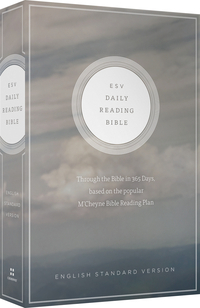 Do you want to read the whole Bible?
Do you want to read the whole Bible?
The average person reads 200 to 250 words per minute; there are about 775,000 words in the Bible; therefore it takes less than 10 minutes a day to read the whole Bible in a year.
(For those who like details, there’s a webpage devoted to how long it takes to read each book of the Bible. And if you want a simple handout that has every Bible book with a place to put a check next to every chapter, go here.)
Audio Bibles are usually about 75 hours long, so you can listen to it in just over 12 minutes a day.
But the point is not merely to read the whole thing to say you’ve done it or to check it off a list. The Bible itself never commands that we read the Bible through in a year. What is commends is knowing the whole counsel of God (Acts 20:27) and meditating or storing or ruminating upon God’s self-disclosure to us in written form (Deut. 6:7; 32:46; Ps. 119:11, 15, 23, 93, 99; 143:5).
As Joel Beeke writes:
As oil lubricates an engine, so meditation facilitates the diligent use of means of grace (reading of Scripture, hearing sermons, prayer, and all other ordinances of Christ), deepens the marks of grace (repentance, faith, humility), and strengthens one’s relationships to others (love to God, to fellow Christians, to one’s neighbors at large).
Thomas Watson put it like this: “A Christian without meditation is like a solider without arms, or a workman without tools. Without meditation the truths of God will not stay with us; the heart is hard, and the memory is slippery, and without meditation all is lost.”
So reading the Bible cover to cover is a great way to facilitate meditation upon the whole counsel of God.
But a simple resolution to do this is often an insufficient. Most of us need a more proactive plan.
One option is to get a Bible that has a plan as part of its design. For example, Crossway offers the ESV Daily Reading Bible (based on the popular M’Cheyne reading plan—read through the OT once and the NT and Psalms twice) or the One-Year Bible in the ESV (whole Bible once in 364 readings). [For multiple bindings of the ESV Daily Reading Bible, go here.]
Stephen Witmer explains the weaknesses of typical plans and offers some advice on reading the Bible together with others—as well as offering his own new two-year plan. (“In my opinion, it is better to read the whole Bible through carefully one time in two years than hastily in one year.”) His plan has you read through one book of the Bible at a time (along with a daily reading from the Psalms or Proverbs). At the end of two years you will have read through the Psalms and Proverbs four times and the rest of the Bible once.
The Gospel Coalition’s For the Love of God Blog (which you can subscribe to via email, but is now also available as a free app) takes you through the M’Cheyne reading plan, with a meditation each day by D. A. Carson related to one of the readings. M’Cheyne’s plan has you read shorter selections from four different places in the Bible each day.
Jason DeRouchie, the editor of the new and highly recommended What the Old Testament Authors Really Cared About: A Survey of Jesus’ Bible, offers his KINGDOM Bible Reading Plan, which has the following distinctives:
Proportionate weight is given to the Old and New Testaments in view of their relative length, the Old receiving three readings per day and the New getting one reading per day.
The Old Testament readings follow the arrangement of Jesus’ Bible (Luke 24:44—Law, Prophets, Writings), with one reading coming from each portion per day.
In a single year, one reads through Psalms twice and all other biblical books once; the second reading of Psalms (highlighted in gray) supplements the readings through the Law (Genesis-Deuteronomy).
Only twenty-five readings are slated per month in order to provide more flexibility in daily devotions.
The plan can be started at any time of the year, and if four readings per day are too much, the plan can simply be stretched to two or more years (reading from one, two, or three columns per day).
Trent Hunter’s “The Bible-Eater Plan” is an innovative new approach that has you reading whole chapters, along with quarterly attention to specific books. The plan especially highlights OT chapters that are crucial to the storyline of Scripture and redemptive fulfillment in Christ.
For those who would benefit from a realistic “discipline + grace” approach, consider “The Bible Reading Plan for Shirkers and Slackers.” It takes away the pressure (and guilt) of “keeping up” with the entire Bible in one year. You get variety within the week by alternating genres by day, but also continuity by sticking with one genre each day. Here’s the basic idea:
Sundays: Poetry
Mondays: Penteteuch (Genesis through Deuteronomy)
Tuesdays: Old Testament history
Wednesdays: Old Testament history
Thursdays: Old Testament prophets
Fridays: New Testament history
Saturdays: New Testament epistles (letters)
There are a number of Reading Plans for ESV Editions. Crossway has made them accessible in multiple formats:
web (a new reading each day appears online at the same link)
RSS (subscribe to receive by RSS)
podcast (subscribe to get your daily reading in audio)
iCal (download an iCalendar file)
mobile (view a new reading each day on your mobile device)
print (download a PDF of the whole plan)
Reading Plan
Format
Chronological
Through the Bible chronologically (from Back to the Bible)
RSS
iCal
Mobile
Daily Light on the Daily Path
Daily Light on the Daily Path – the ESV version of Samuel Bagster’s classic
RSS
iCal
Mobile
Daily Office Lectionary
Daily Psalms, Old Testament, New Testament, and Gospels
RSS
iCal
Mobile
Daily Reading Bible
Daily Old Testament, New Testament, and Psalms
RSS
iCal
Mobile
ESV Study Bible
Daily Psalms or Wisdom Literature; Pentateuch or the History of Israel; Chronicles or Prophets; and Gospels or Epistles
RSS
iCal
Mobile
Every Day in the Word
Daily Old Testament, New Testament, Psalms, Proverbs
RSS
iCal
Mobile
Literary Study Bible
Daily Psalms or Wisdom Literature; Pentateuch or the History of Israel; Chronicles or Prophets; and Gospels or Epistles
RSS
iCal
Mobile
M’Cheyne One-Year Reading Plan
Daily Old Testament, New Testament, and Psalms or Gospels
RSS
iCal
Mobile
Outreach
Daily Old Testament, Psalms, and New Testament
RSS
iCal
Mobile
Outreach New Testament
Daily New Testament. Read through the New Testament in 6 months
RSS
iCal
Mobile
Through the Bible in a Year
Daily Old Testament and New Testament
RSS
iCal
Mobile
You can also access each of these Reading Plans as podcasts:
Right-click (Ctrl-click on a Mac) the “RSS” link of the feed you want from the above list.
Choose “Copy Link Location” or “Copy Shortcut.”
Start iTunes.
Under File, choose “Subscribe to Podcast.”
Paste the URL into the box.
Click OK.
For those looking for some books to have on hand as “helps” as you read through the Bible, here are a few suggestions:
D. A. Carson, For the Love of God: A Daily Companion for Discovering the Riches of God’s Word, Volume 1
D. A. Carson, For the Love of God: A Daily Companion for Discovering the Riches of God’s Word, Volume 2
D. A. Carson, The God Who Is There: Finding Your Place in God’s Story
Jason DeRouchie, ed., What the Old Testament Authors Really Cared About: A Survey of Jesus’ Bible
Michael Williams, How to Read the Bible through the Jesus Lens: A Guide to Christ-Focused Reading of Scripture
George Guthrie, Read the Bible for Life: Your Guide to Understanding and Living God’s Word
Gordon Fee and Douglas Stuart, How to Read the Bible Book by Book: A Guide
Grudem, Collins, Schreiner, eds., Understanding the Big Picture of the Bible: A Guide to Reading the Bible Well
Graeme Goldsworthy, According to Plan: The Unfolding Revelation of God in the Bible
Vaughn Roberts, God’s Big Picture: Tracing the Storyline of the Bible
D. A. Carson, Douglas Moo, and Andy Naselli, Introducing the New Testament: A Short Guide to Its History and Message
As you read through the Bible, here’s a chart you may want to to print out and have on hand. It’s from Goldsworthy’s book According to Plan. It simplified, of course, but it can be helpful in locating where you’re at in the biblical storyline and seeing the history of Israel “at a glance.”
Goldsworthy’s outline is below. You can also download this as a PDF (posted with permission).
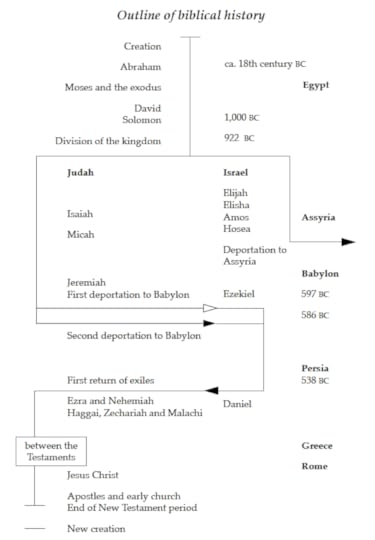
Taken from According to Plan: The Unfolding Revelation of God in the Bible by Graeme Goldsworthy. Copyright(c) Graeme Goldsworthy 1991. Used by permission of InterVarsity Press, PO Box 1400, Downers Grove, IL 60515 (www.ivpress.com) and Inter-Varsity Press, Norton Street, Nottingham NG7 3HR England (www.ivbooks.com)
Creation by Word
Genesis 1 and 2
The Fall
Genesis 3
First Revelation of Redemption
Genesis 4-11
Abraham Our Father
Genesis 12-50
Exodus: Our Pattern of Redemption
Exodus 1-15
New Life: Gift and Task
Exodus 16-40; Leviticus
The Temptation in the Wilderness
Numbers; Deuteronomy
Into the Good Land
Joshua; Judges; Ruth
God’s Rule in God’s Land
1 and 2 Samuel; 1 Kings 1-10; 1 Chronicles; 2 Chronicles 1-9
The Fading Shadow
1 Kings 11-22; 2 Kings
There Is a New Creation
Jeremiah; Ezekiel; Daniel; Esther
The Second Exodus
Ezra; Nehemiah; Haggai
The New Creation for Us
Matthew; Mark; Luke; John
The New Creation in Us Initiated
Acts
The New Creation in Us Now
New Testament Epistles
The New Creation Consummated
The New Testament
Below are Goldsworthy’s summaries of each section.
Creation by Word
Genesis 1 and 2
In the beginning God created everything that exists. He made Adam and Eve and placed them in the garden of Eden. God spoke to them and gave them certain tasks in the world. For food he allowed them the fruit of all the trees in the garden except one. He warned them that they would die if they ate of that one tree.
The Fall
Genesis 3
The snake persuaded Eve to disobey God and to eat the forbidden fruit. She gave some to Adam and he ate also. Then God spoke to them in judgment, and sent them out of the garden into a world that came under the same judgment.
First Revelation of Redemption
Genesis 4-11
Outside Eden, Cain and Abel were born to Adam and eve. Cain murdered Abel and Eve bore another son, Seth. Eventually the human race became so wicked that God determined to destroy every living thing with a flood. Noah and his family were saved by building a great boat at God’s command. The human race began again with Noah and his three sons with their families. Sometime after the flood a still unified human race attempted a godless act to assert its power in the building of a high tower. God thwarted these plans by scattering the people and confusing their language.
Abraham Our Father
Genesis 12-50
Sometime in the early second millennium BC God called Abraham out of Mesopotamia to Canaan. He promised to give this land to Abraham’s descendants and to bless them as his people. Abraham went, and many years later he had a son, Isaac. Isaac in rum had two sons, Esau and Jacob. The promises of God were established with Jacob and his descendants. He had twelve sons, and in time they all went to live in Egypt because of famine in Canaan.
Exodus: Our Pattern of Redemption
Exodus 1-15
In time the descendants of Jacob living in Egypt multiplied to become a very large number of people. The Egyptians no longer regarded them with friendliness and made them slaves. God appointed Moses to be the one who would lead Israel out of Egypt to the promised land of Canaan. When the moment came for Moses to demand the freedom of his people, the Pharaoh refused to let them go. Though Moses worked ten miracle-plagues which brought hardship, destruction, and death to the Egyptians. Finally, Pharaoh let Israel go, but then pursued them and trapped them at the Red Sea (or Sea of Reeds). The God opened a way in the sea for Israel to cross on dry land, but closed the water over the Egyptian army, destroying it.
New Life: Gift and Task
Exodus 16-40; Leviticus
After their release from Egypt, Moses led the Israelites to Mount Sinai. There God gave them his law which they were commanded to keep. At one point Moses held a covenant renewal ceremony in which the covenant arrangement was sealed in blood. However, while Moses was away on the mountain, the people persuaded Aaron to fashion a golden calf. Thus they showed their inclination to forsake the covenant and to engage in idolatry. God also commanded the building of the tabernacle and gave all the rules of sacrificial worship by which Israel might approach him.
The Temptation in the Wilderness
Numbers; Deuteronomy
After giving the law to the Israelites at Sinai, God directed them to go in and take possession of the promised land. Fearing the inhabitants of Canaan, they refused to do so, thus showing lack of confidence in the promises of God. The whole adult generation that had come out of Egypt, with the exception of Joshua and Caleb, was condemned to wander and die in the desert. Israel was forbidden to dispossess its kinsfolk, the nation of Edom, Moab, and Ammon, but was given victory over other nations that opposed it. Finally, forty years after leaving Egypt, Israel arrived in the Moabite territory on the east side of the Jordan. Here Moses prepared the people for their possession of Canaan, and commissioned Joshua as their new leader.
Into the Good Land
Joshua; Judges; Ruth
Under Joshua’s leadership the Israelites crossed the Jordan and began the task of driving out the inhabitants of Canaan. After the conquest the land was divided between the tribes, each being allotted its own region. Only the tribe of Levi was without an inheritance of land because of its special priestly relationship to God. There remained pockets of Canaanites in the land and, from time to time, these threatened Israel’s hold on their new possession. From the one-man leaderships of Moses and Joshua, the nation moved into a period of relative instability during which judges exercised some measure of control over the affairs of the people.
God’s Rule in God’s Land
1 and 2 Samuel; 1 Kings 1-10; 1 Chronicles; 2 Chronicles 1-9
Samuel became judge and prophet in all Israel at a time when the Philistines threatened the freedom of the nation. An earlier movement for kingship was received and the demand put to a reluctant Samuel. The first king, Saul, had a promising start to his reign but eventually showed himself unsuitable as the ruler of the covenant people. While Saul still reigned, David was anointed to succeed him. Because of Saul’s jealousy David became an outcast, but when Saul died in battle David returned and became king (about 1000 BC). Due to his success Israel became a powerful and stable nation. He established a central sanctuary at Jerusalem, and created a professional bureaucracy and permanent army. David’s son Solomon succeeded him (about 961 BC) and the prosperity of Israel continued. The building of the temple at Jerusalem was one of Solomon’s most notable achievements.
The Fading Shadow
1 Kings 11-22; 2 Kings
Solomon allowed political considerations and personal ambitions to sour his relationship with God, and this in turn had a bad effect on the life of Israel. Solomon’s son began an oppressive rule which led to the rebellion of the northern tribes and the division of the kingdom. Although there were some political and religious high points, both kingdoms went into decline, A new breed of prophets warned against the direction of national life, but matters went from bad to worse. In 722 BC the northern kingdom of Israel fell to the power of the Assyrian empire. Then, in 586 BC the southern kingdom of Judah was devastated by the Babylonians. Jerusalem and its temple were destroyed, and a large part of the population was deported to Babylon.
There Is a New Creation
Jeremiah; Ezekiel; Daniel; Esther
The prophets of Israel warned of the doom that would befall the nation. When the first exiles were taken to Babylon in 597 BC, Ezekiel was among them. Both prophets ministered to the exiles. Life for the Jews (the people of Judah) in Babylon was not all bad, and in time many prospered. The books of Jeremiah and Ezekiel indicate a certain normality to the experience, while Daniel and Esther highlight some of the difficulties and suffering experienced in an alien and oppressive culture.
The Second Exodus
Ezra; Nehemiah; Haggai
In 539 BC Babylon fell to the Medo-Persian empire. The following year, Cyrus the king allowed the Jews to return home and to set up a Jewish state within the Persian empire. Great difficulty was experienced in re-establishing the nation. There was local opposition to the rebuilding of Jerusalem and the temple. Many of the Jews did not return but stayed on in the land of their exile. In the latter part of the fourth century BC, Alexander the Great conquered the Persian empire. The Jews entered a long and difficult period in which Greek culture and religion challenged their trust in God’s covenant promises. In 63 BC Pompey conquered Palestine and the Jews found themselves a province of the Roman empire.
The New Creation for Us
Matthew; Mark; Luke; John
The province of Judea, the homeland of the Jews, came under Roman rule in 63 BC. During the reign of Caesar Augustus, Jesus was born at Bethlehem, probably about the year 4 BC. John, known as the Baptist, prepared the way for the ministry of Jesus. This ministry of preaching, teaching, and healing began with Jesus’ baptism and lasted about three years. Growing conflict with the Jews and their religious leaders led eventually to Jesus being sentenced to death by the Roman governor, Pontius Pilate. He was executed by the Romans just outside Jerusalem, but rose from death two days afterward and appealed to his followers on a number of occasions. After a period with them, Jesus was taken up to heaven.
The New Creation in Us Initiated
Acts
After Jesus had ascended, his disciples waited in Jerusalem. On the day of Pentecost the Holy Spirit came upon them and they began the task of proclaiming Jesus. As the missionary implications of the gospel became clearer to the first Christians, the local proclamation was extended to world evangelization. The apostle Paul took the gospel to Asia Minor and Greece, establishing many churches as he went. Eventually a church flourished at the heart of the empire of Rome.
The New Creation in Us Now
New Testament Epistles
As the gospel made inroads into pagan societies it encountered many philosophies and non-Christian ideas which challenged the apostolic message. The New Testament epistles shows that the kind of pressures to adopt pagan ideas that had existed for the people of God in Old Testament times were also a constant threat to the churches. The real danger to Christian teaching was not so much in direct attacks upon it, but rather in the subtle distortion of Christian ideas. Among the troublemakers were the Judaizers who added Jewish law-keeping to the gospel. The Gnostics also undermined the gospel with elements of Greek philosophy and religion.
The New Creation Consummated
The New Testament
God is Lord over history and therefore, when he so desires, he can cause the events of the future to be recorded. All section of the New Testament contain references to things which have not yet happened, the most significant being the return of Christ and the consummation of the kingdom of God. No clues to the actual chronology are given, but it is certain that Christ will return to judge the living and the dead. The old creation will be undone and the new creation will take its place.
December 24, 2013
December 23, 2013
None Like Christ, None Like Christ, None Like Christ
John Brown of Haddington (1722-1787):
If I never write to you more, let these be my last words:
There is none like Christ-none like Christ-none like Christ. . . .
There is no learning nor knowledge like the knowledge of Christ.
No life like Christ living in the heart by faith.
No work like the service, the spiritual service of Christ,
No reward like the free-graces wages of Christ.
No riches nor wealth like “the unsearchable riches of Christ.”
No rest, no comfort, like the rest, the consolation of Christ;
No pleasure like the pleasure of fellowship with Christ.
Little as I know of Christ, and it is my sin and shame that I know so little of him, I would not exchange the learning of one hour’s fellowship with Christ for all the liberal learning in ten thousand universities, during ten thousand ages, even though angels were to be my teachers.
Cited in Joel Beeke, Puritan Reformed Spirituality, 220-21.
Justin Taylor's Blog
- Justin Taylor's profile
- 44 followers



